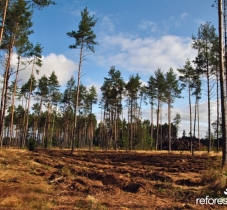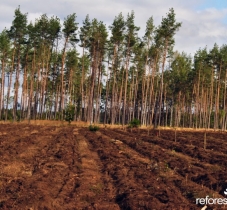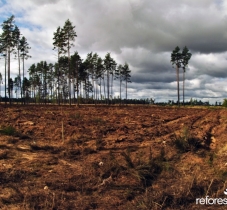Project description
Reforest'Action and its partner Sylva Nova invite you to take part in the restoration of the forest in the region of Pomerania in Poland !
The project at a glance
- Number of trees to be planted: 14,000
- Area of the plantation: 2.24 hectares
- Species planted: oak, birch, larch, various hardwoods (wild apple, wild pear, blackthorn, hawthorn, ...)
- Type of project: reforestation following a storm
- Planting period: Fall 2020
Context and Benefits
After two years of hard work to remove the trees felled by the storm, the phase of rebuilding and replanting the devastated forests can finally begin and will be spread out over at least the next three years. These forests consisted mainly of pine, but also of broadleaves trees. As the soils are naturally quite poor, a good part of the pine stands will be restored. However, the regeneration project includes a significant proportion of deciduous species such as beech, birch and oak and a mixture of forest fruit trees such as cherry, mountain ash and wild apple.
Experience and a great deal of research shows that the productivity of forest species increases with species diversity. Species "educate" each other and compete for access to light. Diversity optimises the reception of biodiversity because each species has its own specific fauna and flora, ultimately increasing the richness of the soil.
Finally, it increases the resistance of the stands to diseases and biological attacks. These will be much more difficult to disperse as they are often specific to a species. The difference in tree height and conformation also makes the trees more resistant to strong winds.









